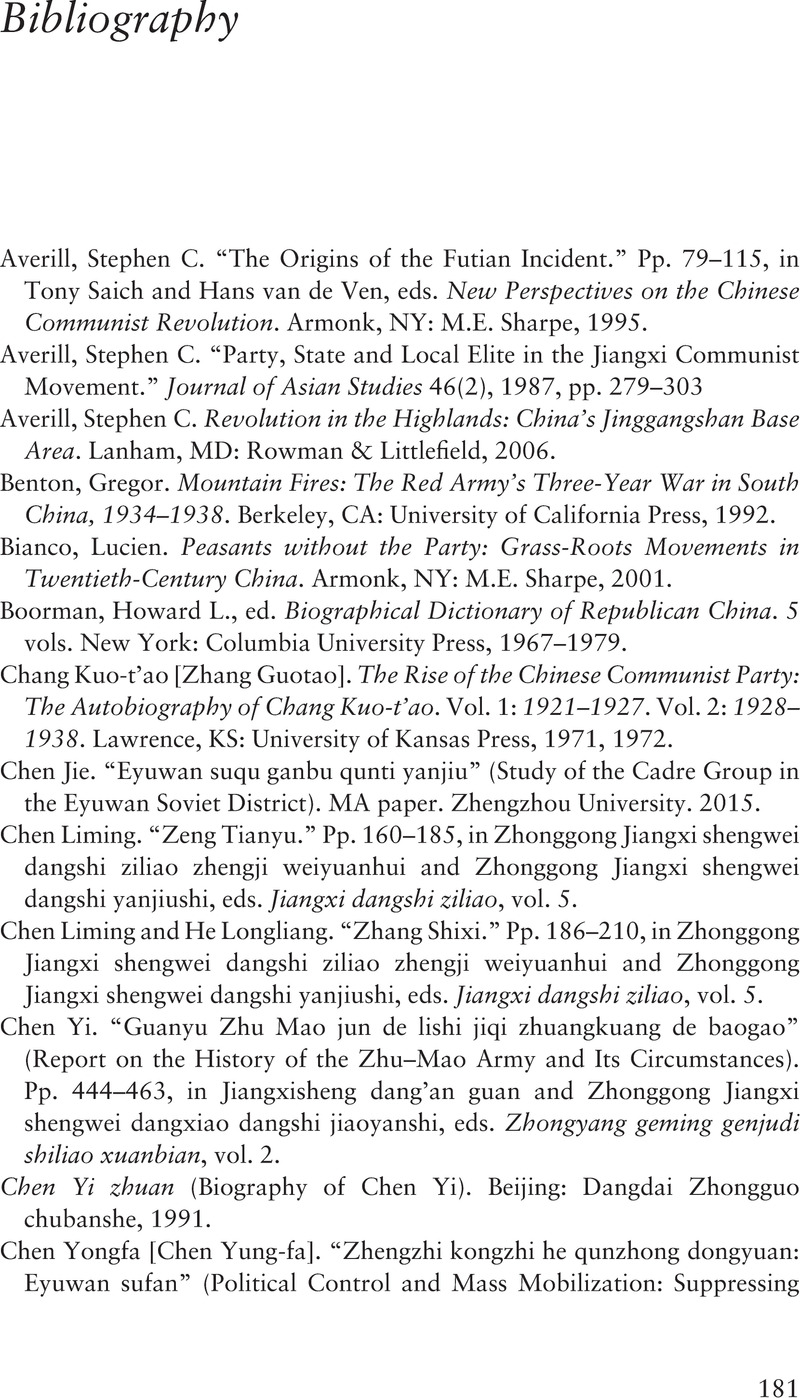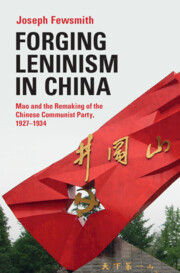Book contents
- Forging Leninism in China
- Forging Leninism in China
- Copyright page
- Dedication
- Contents
- Figures
- Maps
- Acknowledgments
- Introduction
- 1 Disaster and Local Rebellion
- 2 The Donggu Revolutionary Base Area
- 3 A Different Approach to Revolution
- 4 Mao versus Local Forces
- 5 The Logic of Sufan
- Conclusion
- Glossary
- Bibliography
- Index
- References
Bibliography
Published online by Cambridge University Press: 03 February 2022
- Forging Leninism in China
- Forging Leninism in China
- Copyright page
- Dedication
- Contents
- Figures
- Maps
- Acknowledgments
- Introduction
- 1 Disaster and Local Rebellion
- 2 The Donggu Revolutionary Base Area
- 3 A Different Approach to Revolution
- 4 Mao versus Local Forces
- 5 The Logic of Sufan
- Conclusion
- Glossary
- Bibliography
- Index
- References
Summary

- Type
- Chapter
- Information
- Forging Leninism in ChinaMao and the Remaking of the Chinese Communist Party, 1927–1934, pp. 181 - 194Publisher: Cambridge University PressPrint publication year: 2022



